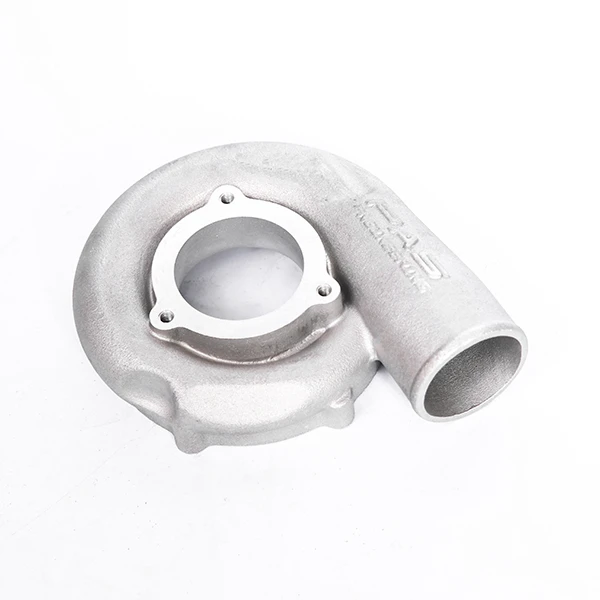Mobile:+86-311-808-126-83
Email:info@ydcastings.com
Welding Techniques for Joining Cast Iron and Steel Effectively
Welding Cast Iron to Steel Techniques, Challenges, and Considerations
Welding cast iron to steel is a process that spurs interest among manufacturers and fabricators seeking to leverage the unique properties of both materials. Cast iron, known for its excellent castability, wear resistance, and ability to dampen vibrations, contrasts with steel's toughness, ductility, and higher strength-to-weight ratio. Despite these advantages, welding cast iron to steel presents several challenges that require careful consideration and appropriate techniques for successful joint fabrication.
Understanding the Materials
Cast iron primarily consists of iron, carbon, and silicon, with carbon content typically exceeding 2%. This high carbon content makes cast iron brittle, posing a challenge during welding, where thermal stresses can lead to cracking. On the other hand, steel, with lower carbon content and added alloying elements, boasts better toughness and weldability.
The differences in thermal expansion and contraction rates between the two materials further complicate the welding process. When heated, cast iron expands significantly, but when it cools, it contracts rapidly. In contrast, steel has a different thermal behavior, which can lead to weak joints and cracks if not managed properly.
Pre-Welding Preparations
Before embarking on the welding process, proper preparation is crucial. This involves cleaning the surfaces to be welded, removing any rust, oil, or grease that could contaminate the weld. The edges of the weld area should also be beveled to allow proper penetration, improving the load-carrying capacity of the joint.
It is advisable to preheat the cast iron component to a temperature of approximately 400°F (204°C). This preheating helps reduce thermal shock and the risk of cracking. The preheating minimizes the temperature differential between the welding arc and the base metals, ensuring a more uniform temperature gradient during the welding process.
Choosing the Right Filler Material
The selection of the appropriate filler material is crucial in welding cast iron to steel. Typical filler materials include nickel-based alloys, as they exhibit good compatibility with both materials and offer excellent corrosion resistance. Nickel is particularly favorable because it enhances ductility and minimizes the initiation of cracks.
When selecting a filler rod, one must consider the specific types of cast iron and steel being joined. For instance, with ductile cast iron, a filler that matches its mechanical properties should be used to ensure a strong joint. Conversely, when welding gray cast iron to steel, a nickel-iron filler may provide optimal results.
welding cast iron to steel

Welding Techniques
There are several welding techniques suitable for joining cast iron to steel. The most commonly employed methods include
1. MIG Welding (Metal Inert Gas) This method offers precise control over the welding process and is effective for thin sections. The use of a nickel-based filler wire can mitigate cracking.
2. TIG Welding (Tungsten Inert Gas) TIG welding is advantageous for achieving high weld quality, particularly in thin materials. It allows for better control of the heat input, minimizing distortion in the weld zone.
3. Stick Welding (SMAW) Stick welding can also be effective, employing specialized electrodes designed for cast iron to steel applications. This method allows for versatility in various work environments.
Regardless of the technique chosen, it is essential to apply a low heat input. This can be achieved by using faster travel speeds and maintaining a short arc length, further reducing the risk of distortion and overheating.
Post-Welding Considerations
Post-welding treatments can enhance the quality of the joint and prevent cracks. Gradual cooling is vital; using sand or blankets can slow down the cooling process, reducing the likelihood of thermal shock. Additionally, stress-relief annealing may be performed after welding to release residual stresses and improve the overall integrity of the joint.
Conclusion
Welding cast iron to steel presents unique challenges, yet it can yield beneficial results with the right approach. Understanding the properties of both materials, proper preparation, careful filler selection, and appropriate welding techniques are all critical to achieving a successful joint. By addressing these elements, fabricators can harness the advantages of both cast iron and steel, leading to enhanced product performance in various applications.
-
Why Should You Invest in Superior Pump Castings for Your Equipment?NewsJun.09,2025
-
Unlock Performance Potential with Stainless Impellers and Aluminum End CapsNewsJun.09,2025
-
Revolutionize Your Machinery with Superior Cast Iron and Aluminum ComponentsNewsJun.09,2025
-
Revolutionize Fluid Dynamics with Premium Pump ComponentsNewsJun.09,2025
-
Optimizing Industrial Systems with Essential Valve ComponentsNewsJun.09,2025
-
Elevate Grid Efficiency with High-Precision Power CastingsNewsJun.09,2025











